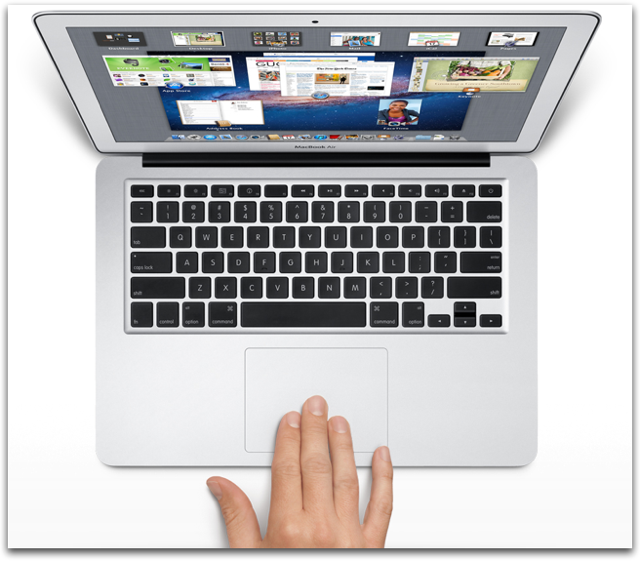| Photo courtesy of Apple. Read all about OS X Lion on Apple's site |
There are many reasons why this is good--faster operation, fewer bugs, conservation of disk-space, better and more consistent user-interface features, smoother integration--but the one obvious negative is that you might currently have applications on your Mac that rely on Rosetta. That software will have to be upgraded or removed.
Now, you could go through your Applications folder and look at each application's type by command-clicking Get Info. But there's a much better way to do it all-at-once (Hat tip: Cult of Mac).
Here's How:
- Open the Terminal. (If you don't know how to do this, just type "Terminal" in Spotlight and it will show up as an application.)
- Cut the following line from here:
system_profiler SPApplicationsDataType >~/Desktop/MyFileTypes.txt
...and paste it into the Terminal, then hit the Return button on your keyboard.
What will happen now is that a text file entitled MyFileTypes will appear on your desktop. It might take a couple minutes. Go have a cup of tea while your Mac does your work for you.
- When the process is complete, quit the Terminal and double-click the MyFileTypes file on your desktop.
The most common obsolete applications are Microsoft Office 2004 and Quicken. To my chagrin, LabVIEW 8.6 is there, too. (That's a real surprise-- it's so fast, I had no clue it was being run in the emulator.) (UPDATE: It appears the Rosetta issue for LabVIEW 8.6 is limited to drivers, though there is an additional 32-bit issue with kexts.)
Deal with obsolete apps before upgrading to Lion
For one thing, the removal utilities that come with some of them (such as Microsoft Office) are themselves PowerPC-based. Or, you may need the old version to export your files to some new, Rosetta-free application-- and I'm talkin' to you, Quicken-- for which there is no Intel- or Universal-based update. Fortunately, in the case of Quicken there are many alternatives. See this superb list compiled by TUAW after Intuit, Quicken's publisher, sent an infuriating email to its users with lame suggestions on how to work in the post-Lion world. Really, now, Intuit: on pg. 102 of Scott's Big Book of Pithy Pronouncements is: "Competitors are made, not born." Q.E.D.

Having found this very useful, I purchased Office for Mac 2011 to get all the Intel binaries for the main Office Apps. However, to my surprise, Microsoft AutoUpdate is STILL PowerPC. I have not been able to get an answer or solution to this - can you help?
ReplyDeleteDave (knowles8@bigpond.com)
Hi David,
ReplyDeleteThanks for the kind words.
Hm, I just tried Word 2011 on my Mac (Intel/Mountain Lion), and it allowed me to run "Check for Updates" manually (from the Help menu), and there was a "Check Automatically" tick-box. I seem to recall having received automatic notifications of updates from Office 2011 on my Mac, but it's evident that the manual update process works, at least. It might even download an Intel updater? Try it and see if your updates (or at least notifications) come automatically as IIRC mine do.
Or switch to NeoOffice or LibreOffice... see https://easyosx.wordpress.com/2011/05/05/openvsneovslibre/
Update: Dave and I corresponded offline. Puzzle: Having upgraded to MS Office 2011, there was no issue with AutoUpdate on my (Intel/Mountain Lion) Mac. In fact, in the Applications folder there was no app named "AutoUpdate."
ReplyDeleteDave tried removing the errant PowerPC AutoUpdate app from his Applications folder, then rebooting. After that, all was well. It seems the correct version of AutoUpdate is built-into Office somewhere and does not exist as a separate application of that name.
We attribute the issue to failing to completely remove the old AutoUpdate executable in the upgrade process. If you are using MS Office 2011 and are experiencing AutoUpdate compatibility issues, try trashing AutoUpdate.
Thanks for your patience, Dave!